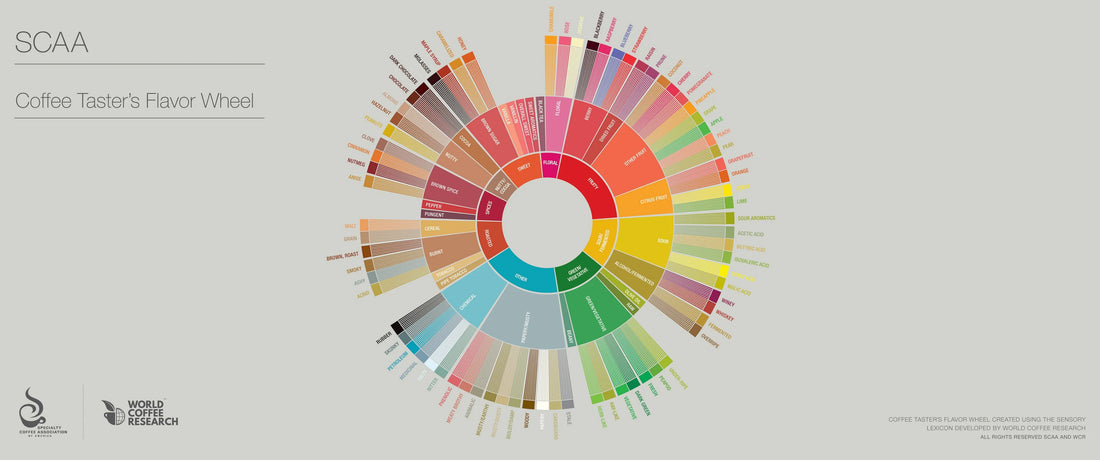Here I'm going to briefly go over what I understand and have learned regarding coffee tasting and how we get some of these tasting notes listed on the coffee product pages.
Coffee can have some wild tasting notes... We recently had one with a tasting note of Jolly Rancher!
But how does coffee get a coffee get their flavors? Especially a flavor as specific as Jolly Rancher!
First off, we don't add any flavors to the coffee. They're all naturally occuring. Arabica coffee is one of the most chemically complex beverages out there and several things influence how it's going to taste.
These tasting notes will change based on where it's grown, how it's processed, how it's roasted, it's variety, how it's brewed, how old the raw coffee is, and how it's stored.
There are thousands of unique extractable chemical compounds in coffee that produce many different flavors. So if you're tasting blueberry in your coffee it's very likely there is a similar compound found in blueberries that you're tasting.
How these flavors are identified can be through several different ways.
For us, I combine a lot of these, to quickly pinpoint what these tasting notes are going to be since we've got a small team.
For us, I combine a lot of these, to quickly pinpoint what these tasting notes are going to be since we've got a small team.
For us, we rely on the green coffee supplier who has already traveled to the farms the coffee comes from to sample and source coffees and has a base of tasting notes written down.
From there, coffee is imported and further roasted and sampled to provide a good range of tasting notes to offer to roasters.
I mostly purchase coffee based off of the tasting notes to bring something different and unique for our Coffee Club members and customers. From there, once we get the coffee in house, we roast a sample batch and drink the coffee to get a base of tasting notes.
From that base we can further pinpoint the actual tasting notes by using a flavor wheel.
A Flavor Wheel works like this.
Starting in the center of the wheel you'll have your base. Usually easy to identify flavors that are pretty broad. Fruity, Sweet, Nutty/Cocoa, Spices, Roasted, Green, Sour/Fermented.
Starting in the center of the wheel you'll have your base. Usually easy to identify flavors that are pretty broad. Fruity, Sweet, Nutty/Cocoa, Spices, Roasted, Green, Sour/Fermented.
The next layer working outward is more specific and still relatively easy to identify by someone with a basic understanding of coffee. Flavors you'll see here are citrus fruit, Berry, Black Tea, Vanilla, Brown Spice, Tobacco, Raw, etc...
The third layer is where these tasting notes are very specific and takes experience to identify these notes. Usually by going out and buying the specific fruit, spice, alcohol, candy, or whatever else is there to build and develop the palette.
Pineapple, Hay, Lemon, Molasses, Honey, Malt, and candy are some of the specifics you can find on this layer.
Each coffee is going to have different depths of the coffee flavor wheel charted. Some getting very specific like Jolly Rancher, others less descript with berry, citrus, and fresh vegetables. These tasting notes will vary coffee to coffee but also the amount of tasting and refining of the roast has been done by the roaster.
You can look up Coffee Flavor Wheel on google if you ever want to try this out yourself. Get two different coffees, brew them up the same, let them cool slightly and try your hand at identifying the tasting notes and see how far you get.
It's also worth mentioning that tasting notes will vary person to person. Some may notice the blueberry or lemon note, others might only notice a fruity berry and some bitterness.
Definitely something fun to try if you really want to nerd out over some coffee.

